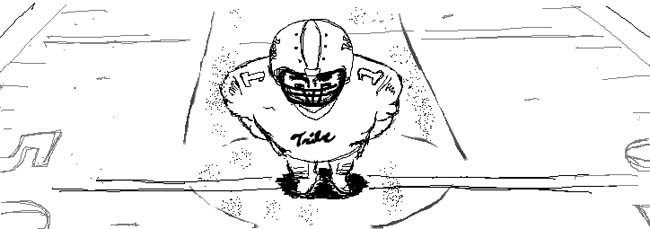The estate of Walter Zable ’37, LL.D. ’78 recently gave the College of William and Mary a $23.9 million donation, which is one of the largest single donations the College has ever received. Above and beyond any editorializing, a most heartfelt gratitude needs to be expressed. The Zable estate has shown the College remarkable kindness, and it will not be forgotten.
As stipulated by the Zable estate, $10 million of the $23.9 million donation is to be used for scholarships for student athletes, and another $10 million is to be used for renovations to Zable Stadium. There can be nothing said against the wishes of the estate. It’s the family’s money, and the College will be thankful to use it however the estate sees fit. There are, however, lessons the College can learn from the intentions of the Zable estate.
In donating $10 million toward scholarships for student athletes, the estate has acted wisely. A team can only ever be as good as the players who comprise it, and attracting quality athletes who may not have been able to attend otherwise can only ever be positive for Tribe athletics. Given the pronounced apathy many students at the College have toward the athletics program, recruiting better athletes — and thereby hopefully winning more games — is the College’s surest way to get students interested in its teams and to motivate students to attend the games. Were the College to have had $10 million of its own to spend on the athletics program, there could be few better ways to spend it than the way in which the Zable estate wishes — by giving student athletes an incentive to play for the College.
The other $10 million will no doubt be put to good use as well. There’s no reason to believe Zable stadium should not be renovated, and the $10 million will hopefully be all that’s needed for the requisite repairs. That said, the College can also learn from this part of the Zable estate’s donation.
If the College ever finds itself believing that what the football team is in dire need of is a swankier stadium, it should take a step back for a moment and think about it. Renovations to the stadium are fine and sometimes necessary. However, if the College ever finds itself with money to give to athletics and the ability to choose exactly where that money goes, newer facilities should not be the top priority. The world’s prettiest Band-Aid won’t do much good for a grievous injury, and a better stadium won’t alleviate the football program’s woes — nor will it help fix student apathy toward athletics. The College can best address the athletic program’s challenges — including student apathy — by focusing more on recruiting the players and coaches who constitute a successful team.
The same concept applies to the One Tribe, 19 Tailgates Act, passed last week by the Student Assembly. It was a step in the right direction as far as fighting apathy goes, but it wasn’t enough to solve the issue. Tailgates are fun, but it will quickly become apparent if people are tailgating for a consistently losing team. Winning over student apathy will require winning on the field — and that will require money that focuses on the athletes.

